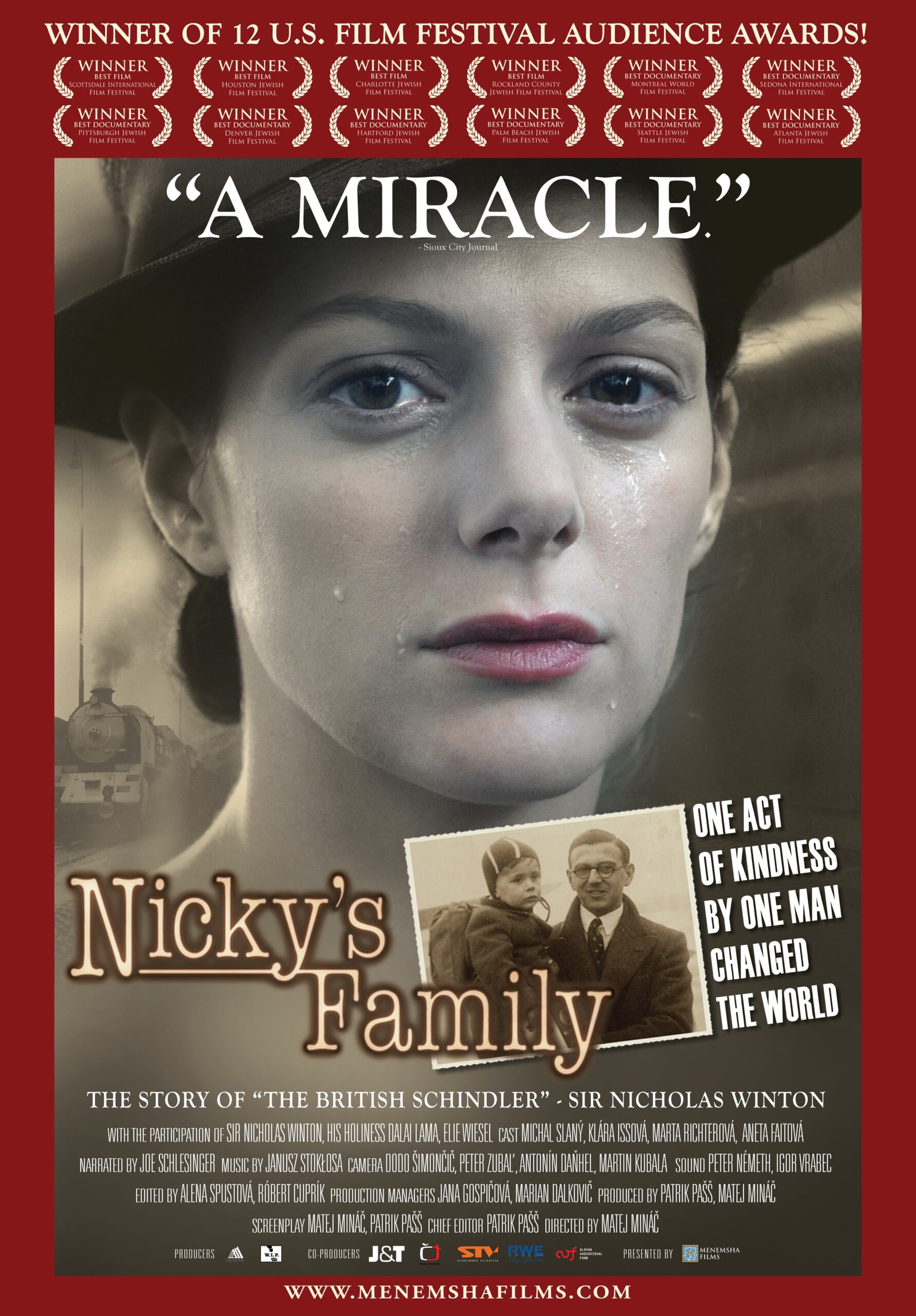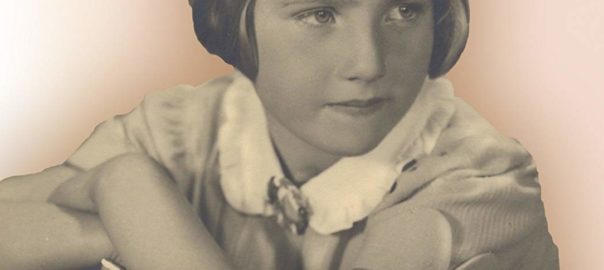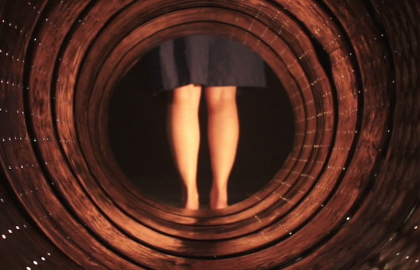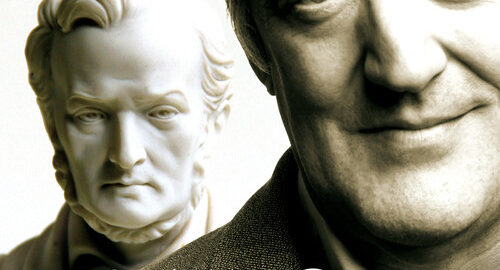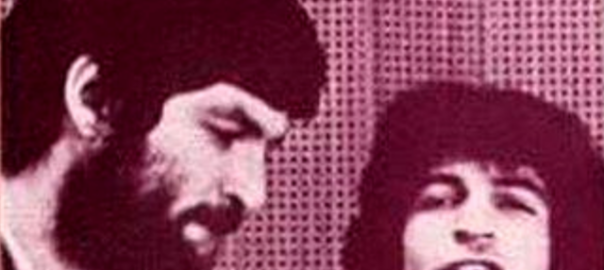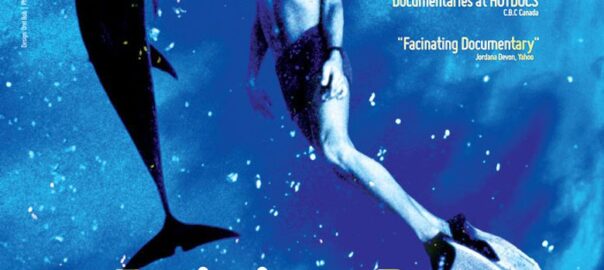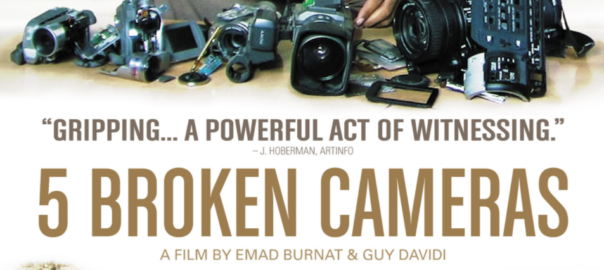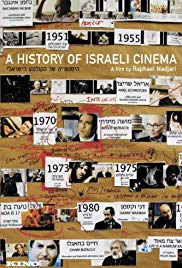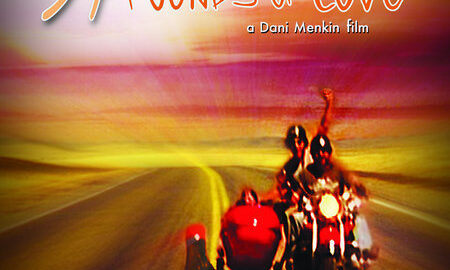Nicholas Winton, an Englishman, organized the rescue of 669 Czech and Slovak children just before the outbreak of World War II. But he never spoke about these events with anyone for more than half a century. His exploits would have probably been forgotten if his wife, fifty years later, hadn’t found a suitcase in the attic, full of documents and transport plans. Then the amazing story of his heroic efforts was unravelled–and today those children have more than six thousand descendants all over the world.
Inside Hana’s Suitcase, is the poignant story of two young children who grew up in pre-WWII Czechoslovakia and the terrible events that they endured just because they happened to be born Jewish. Based on the internationally acclaimed book “Hana’s Suitcase” which has been translated into 40 languages, the film is an effective blend of documentary and dramatic techniques. In addition to tracing the lives of George and Hana Brady in the 1930’s and 40’s, “Inside Hana’s Suitcase” tells the present-day story of “The Small Wings”, a group of Japanese children, and how their passionate and tenacious teacher, Fumiko Ishioka, helped them solve the mystery of Hana Brady, whose name was painted on an old battered suitcase that they received from Auschwitz, the notorious Nazi death camp built in Poland. The film’s plot unfolds as told through contemporary young storytellers who act as the omniscient narrators. They seamlessly transport us through 70 years of history and back and forth across three continents, and relate to us a story of unspeakable sadness and also of shining hope. For this is a Holocaust story unlike others. It provides a contemporary global perspective and lessons to be learned for a better future. Directed by award-winning filmmaker, Larry Weinstein, “Inside Hana’s Suitcase” is a powerful journey full of mystery and memories, brought to life through the first-hand perspectives of Fumiko, Hana’s brother George, and of Hana herself.
Insightful and often hilarious, the latest from documentary filmmaker Alan Zweig surveys the history of Jewish comedy, from the early days of Borsht Belt to the present, ultimately exploring not just ethnicity in the entertainment industry, but also the entire unruly question of what it means to be Jewish.
A female laundry worker desperately attempts to abort the fruit of a violent encounter. When the consequences of her action are revealed, the memories she has repressed re-emerge.
To arrange a public screening of this film visit: http://firstcourse.net/
Enter the world of history’s most controversial composer. Actor Stephen Fry is a devoted fan of Richard Wagner’s music—and so was Hitler. Fry is Jewish and acutely aware of the complexity of his enthusiasm for Richard Wagner. Can Fry disentangle the music he loves from its poisonous links with Hitler? Featuring behind-the-scenes footage of the Bayreuth Festival, the annual festival held in Wagner’s honor and showcasing his music, and a full soundtrack of Wagner’s famous music, this film explores the life and legacy of one of the world’s most famous composers–and poses the question of if it’s possible to separate the art from the artist.
This musical, quasi-documentary film follows the making of the music album “Shablul” by Arik Einstein and Shalom Hanoch. Influenced by The Beatles, interspersed with humorous skits, and loaded with classic songs from Einstein and Hanoch, “The Snail” brings back the ’60s and the Israeli pop and rock scene.
Morad, a teenager living in an Arab neighboorhood in Israel, had everything a teenager could want; he was socially popular, loved by his family, an athlete, and a good student. But after a cruel beating by his classmates, he becomes catatonic and withdraws from life. Instead of interring him in a mental institution, his doctor suggests dolphin-assisted therapy down in Eilat. Desperate to help his son, Morad’s father sells everything, leaves his job and family, moves to Dolphin Reef on the Red Sea, and vows not to return until the boy fully recovers. But even when Morad begins to speak again, he’s changed beyond what anyone could’ve expected. A moving film about nature’s power to heal.
Emad, who lives in the Palestinian village of Bil’in, buys his first camera when his son Gibreel is born, and puts it to use beyond creating family memories. When the government attempts to build a barrier across villagers’ lands, Emad films the resistance and is caught up in a storm of arrests and night raids. One camera after another is shot or smashed. And with each camera, a new chapter of Emad’s story unfolds.
According to filmmaker Raphael Nadjari, Israeli cinema has gone through two stages. The first, 1933-1978, began with the nature of Zionism and exaltation of the Israeli endeavor in Palestine and ended in a more personal study of the Ashkenazi psyche. The second stage, 1978-2005, was defined by a greater diversity of topics as filmmakers tackled everything from the Israeli-Palestinian conflict to the contradictions of modern life. A History of Israeli Cinema tells the story of the building of a gaze on a society torn by ethnics, religious, and political conflicts. It attempts to understand, to denounce, and to explore these complex subjects, always searching for the right ethic, the right form. A History of Israeli Cinema is the result of years of research, studies, documentation, screening, and interviews. Actors, thinkers, producers, filmmakers, professors, and critics worked to build a narrative that remains fragile and incomplete. It is the process rather than the result that is shared here.
Watch Part 2 here.
The inspirational and humorous non-fiction account of a remarkable man and his remarkable life. Ami Ankilewitz was diagnosed with an extremely rare and often fatal form of spinal muscular atrophy (type 2) that severely limits physical growth and movement. Yet at thirty-four years of age, he continues to outlive a doctor’s prediction of life expectancy by twenty-eight years…and counting. Ami, who weighs only thirty-nine pounds, works in Israel as a 3D animator and creates his art despite the fact that his bodily motion is limited to a single finger on his left hand. In doing so, he continues to redefine notions of a “limited” life. The film follows Ami’s journey in search of the doctor who predicted his early demise. Along the way, Ami attempts to come to terms with another major incident from his past and to complete a lifelong dream: to ride a Harley-Davidson across America.
